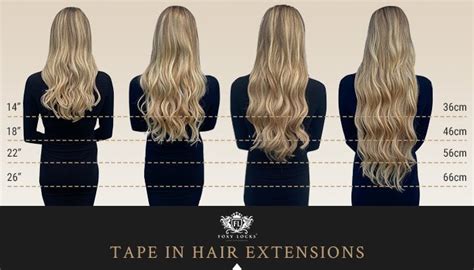When it comes to achieving dream hair, hair extensions and hair toppers are popular options. Both offer unique advantages and cater to different needs. To help you make an informed decision, this comprehensive guide compares hair extensions vs. hair toppers, highlighting their key differences and benefits.

Hair Extensions vs. Hair Topper: A Side-by-Side Comparison
| Feature | Hair Extension | Hair Topper |
|---|---|---|
| Coverage | Full coverage or specific areas | Partial coverage, focuses on the top |
| Attachment | Various methods (e.g., clip-in, tape-in) | Clips or combs, easy to remove |
| Hair Type | Human hair, synthetic hair, or a blend | Human hair, typically |
| Purpose | Lengthen, thicken, or add volume | Conceal thinning hair or bald spots |
| Cost | Variable, based on type and length | Generally more affordable |
Hair Extensions: A Deeper Dive
Types of Hair Extensions
- Clip-in: Most convenient, easy to apply and remove.
- Tape-in: Durable, creates a seamless blend with natural hair.
- Fusion: Bonds extensions to natural hair using heat, offering long-lasting results.
- Sew-in: Attaches extensions to braids or cornrows, providing maximum fullness.
Benefits of Hair Extensions
- Versatile: Can be used to create a wide range of looks, from subtle to dramatic.
- Full Coverage: Provide complete coverage for thicker, fuller hair from root to tip.
- Long-Lasting: Some types, such as fusion extensions, can last for several months with proper care.
- Damage Reduction: Can protect natural hair from heat styling and chemical treatments.
Hair Toppers: A Closer Look
Types of Hair Toppers
- Clip-in: Attaches to natural hair using clips, offering flexibility and easy removal.
- Comb-in: Blends seamlessly with the base, providing a more natural look.
- Tape-in: Less visible than clip-in toppers, can be worn for longer periods.
Benefits of Hair Toppers
- Partial Coverage: Conceals areas of hair thinning without affecting the rest of the hair.
- Natural-Looking: Replicates the appearance of natural hair growth.
- Versatile: Can be trimmed, styled, and washed like natural hair.
- Affordable: More budget-friendly than full hair extensions.
The choice between hair extensions and a hair topper depends on individual needs and goals.
- Hair Extensions: Ideal for those seeking a complete transformation or significant volume increase.
- Hair Topper: Suitable for concealing hair thinning or creating the illusion of fullness in specific areas.
- Consider coverage needs: Assess the desired coverage area and choose the option that aligns with it.
- Evaluate budget: Determine the affordability of different types of hair extensions or hair toppers.
- Research attachment methods: Explore the various attachment options and select the one that meets the comfort and maintenance preferences.
- Consult a professional: Seek advice from a skilled hairstylist to determine the most suitable choice and application method.
Ultimately, both hair extensions and hair toppers offer valuable solutions for enhancing hair appearance. Understanding the key distinctions can empower individuals to select the option that best aligns with their goals and lifestyle.
Additional Considerations:
- Hair Thickness: Hair extensions can add significant volume, while toppers provide a more natural look for thinner hair.
- Lifestyle: Clip-in extensions offer flexibility and easy removal for active individuals.
- Maintenance: Toppers require less maintenance compared to full hair extensions.
- Color Matching: Professional matching is crucial to ensure a seamless and natural blend with natural hair color.
Table 1: Comparing Hair Extension Application Methods
| Method | Pros | Cons |
|---|---|---|
| Clip-in | Easy and quick to apply | Limited longevity, may slip |
| Tape-in | Durable, nearly invisible | Requires professional removal |
| Fusion | Long-lasting, seamless blend | Heat damage, difficult to remove |
| Sew-in | Maximum fullness, protective | Time-consuming to apply and remove |
Table 2: Types of Hair Toppers and Their Features
| Type | Attachment | Coverage |
|---|---|---|
| Clip-in | Clips | Partial, customizable |
| Comb-in | Combs | Base blending, natural look |
| Tape-in | Tape | Less visible, longer wear |
| Lace | Breathable mesh | Seamless integration, invisible base |
Table 3: Benefits and Drawbacks of Hair Extensions
| Benefit | Drawback |
|---|---|
| Versatile styling options | Can be expensive |
| Enhanced volume and length | Requires professional maintenance |
| Damage protection | Can damage natural hair if applied improperly |
| Long-lasting (some types) | Time-consuming to apply and remove |
Table 4: Advantages and Disadvantages of Hair Toppers
| Advantage | Disadvantage |
|---|---|
| Affordable | Limited coverage |
| Partial concealment | Can be visible if not applied correctly |
| Natural-looking | Requires regular cleaning and maintenance |
| Easy to apply and remove | May not provide sufficient volume |
By carefully considering these factors and seeking professional guidance when necessary, individuals can make an informed decision between hair extensions and hair toppers, achieving their desired hair goals and enhancing their overall confidence.
